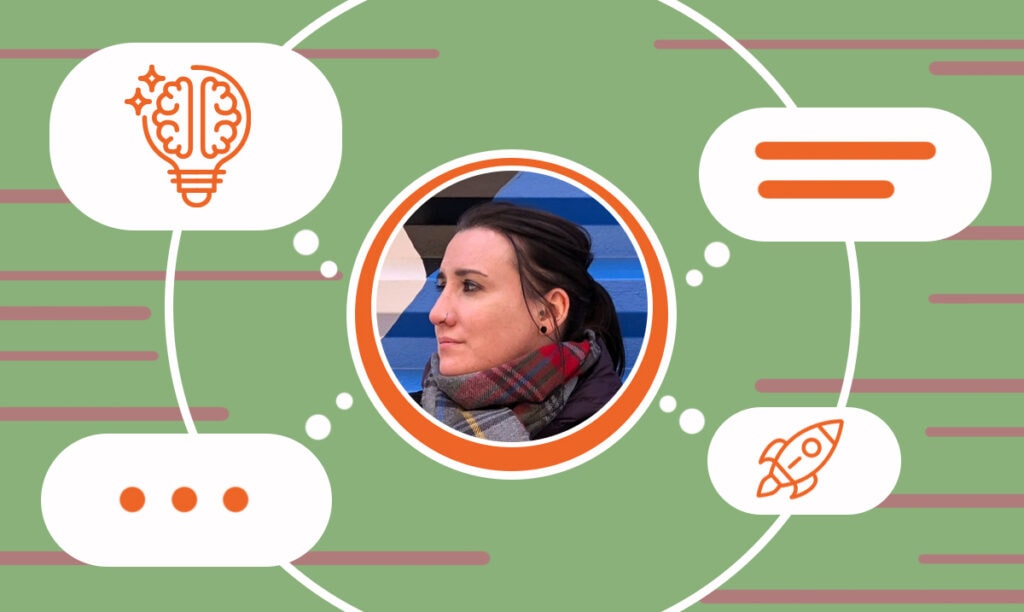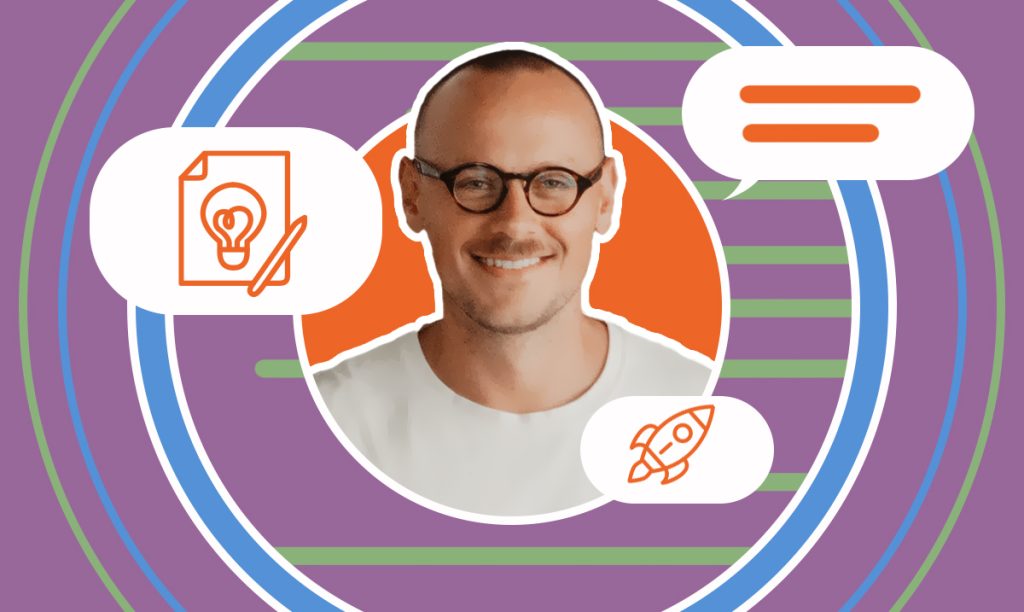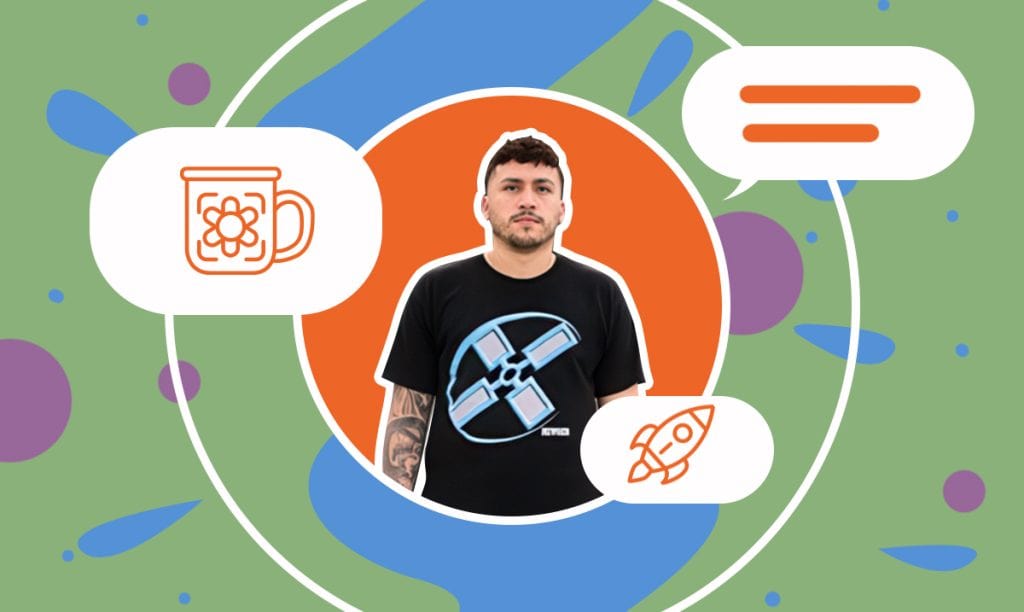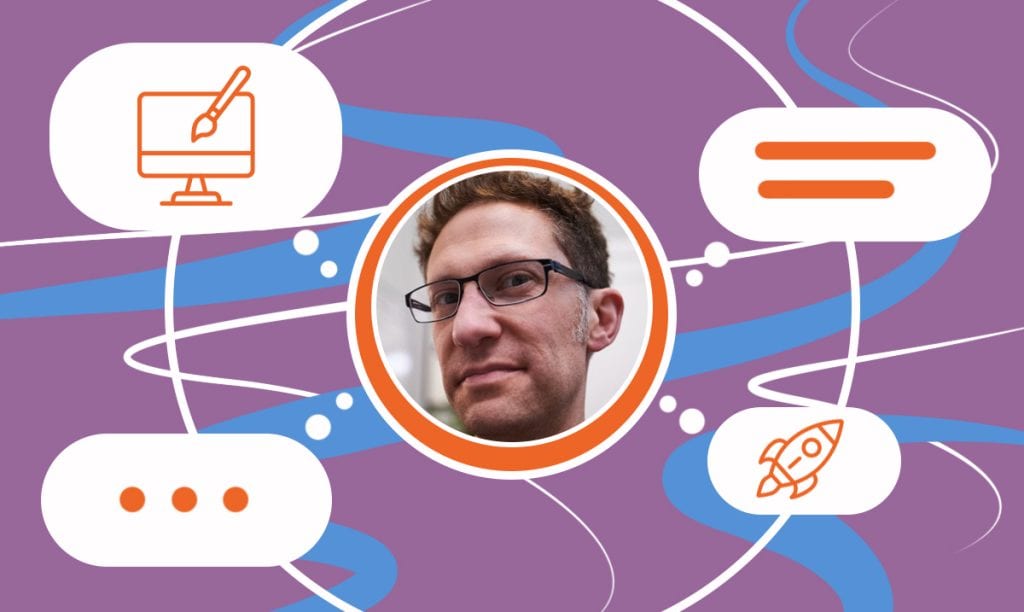Meet Vadim Bozhko, the visionary behind Bozh Studio — a branding and web design business dedicated to helping service-based companies stand out.Fu ...
Love & Logic: Transforming Brands Through Design
Written by: Esther Strauss
Esther is a business strategist with over 20 years of experience as an entrepreneur, executive, educator, and management advisor.
Published on January 29, 2024

In this insightful interview, we delve into the world of design and branding with Angela Roche, the visionary founder of Love & Logic. With a background in running a successful agency, Angela brings a unique perspective to her creative work, emphasizing the importance of passion and collaboration.
Join us as we explore her core philosophy on brand identity and motion design, the challenges posed by AI and digital technologies, and the impact of effective design on businesses. Angela’s candid insights offer a glimpse into the ever-evolving world of creativity, providing valuable advice for emerging businesses and a glimpse into the future of Love & Logic.
Business Evolution
SBS – How did your journey from running an agency to establishing Love & Logic shape your current business approach?
Angela – The core methodologies, systems, and creative workflows were easily adaptable from the agency, meaning I’ve been able to approach business in a relatively similar way, just on a smaller scale for Love & Logic.
However, the agency I ran was a brand and digital agency. About 70% of our business was designing and building websites, something that, towards the end, I had completely fallen out of love with. I knew that founding Love & Logic was an opportunity to reset and reposition the services I offer. The offshoot of that was I had to let most of my client base go.
In the spirit of going solo, I also took the chance to streamline my toolbox. I cut down on the number of apps and software I was using, aiming for a more stripped-down approach to communication and project management. It’s all about that lean, efficient workflow now.
Working independently means I collaborate a lot more. I have a circle of go-to talented collaborators who I work with on urgent deadlines and alternative concepts, or who contribute their expertise for client requests that are outside of my skillset.
Service Specialization
SBS – What drove your decision to focus on services like Motion Design, Brand Identity, Design & Illustration, and Creative Social Content?
Angela – Part passion/part business. I’ve always loved animation and branding. Today’s forward-thinking brands understand the impact motion can have on their visual identity — so it’s a strategic play combining both.
Motion obviously feeds very neatly into social content, where brands have a fraction of a second to capture user attention. And well, illustration is a major part of animation!
Client Success Stories
SBS – Could you share a case study where your services significantly transformed a client’s brand or business?
Angela – I recently completed a project with Mental Health Research UK, an incredible charity dedicated to funding mental health research across universities in the UK.
Despite its impressive 15-year legacy, the charity had not fully embraced a distinctive visual identity beyond its logo’s colour palette. Recognising the need to distinguish themselves in the highly competitive fundraising landscape, the trustees made a strategic decision to establish a more compelling and comprehensive brand presence.
While the new brand is not yet out in the wild, I am optimistic that it will significantly enhance its image and position it prominently in its field. I believe that, in conjunction with their strategic efforts, it will play a vital role in increasing donations and securing additional funding for vital research projects.
Industry Experience
SBS – How has your experience across different sectors like health, academia, charities, and tech influenced your design strategies?
Angela – Working within a well-defined set of sectors has afforded me the opportunity to consistently acquire knowledge and develop a deeper comprehension of the unique challenges and needs within each industry, particularly in the field of mental health research.
Each industry often comes with its distinct terminology and keywords, which, once thoroughly familiarised with, can greatly enhance communication and, of course, design effectiveness.
Design Philosophy
SBS – What is your core philosophy when it comes to brand identity and motion design?
Angela – Do good work, work with nice people, and have fun doing it.
I also have a manifesto describing my approach to work on the whole.
Challenges in the Industry
SBS – What are the biggest challenges you face in the creative industry, especially with the rise of AI and digital technologies?
Angela – We’re at one of those pivotal moments in time where massive change is unfolding. I’m both excited and terrified all at once! I’ve embraced AI and introduced it into numerous aspects of my workflow, and I have found ChatGPT and MidJourney super useful, not to mention fun. However, I am under no illusions about the profound impact and transformation that these significant strides forward will bring to the design industry.
On a more macro level, the 4th industrial revolution, or Industry 4.0 as I’ve heard it called, is going to have a much more substantial effect on wider society. Remember when David Bowie predicted the impact of the internet in 1999? Now multiply that by infinitum!
Client Collaboration
SBS – How do you typically collaborate with clients to ensure their vision and your creative design align effectively?
Angela – Initial phases of projects are highly collaborative and very much a consultative part of the process where I’m really trying to understand the client’s organisation, the problems they’re facing, and their goals. Sometimes, questioning if what they want is what they actually need!
Ideas stages are also fairly collaborative. Sometimes, clients have a clear vision in mind, while other times, they present a problem in search of a creative solution.
For larger/longer projects, I might be brought in to work collaboratively with an in-house team, so constant open comms via Slack is necessary to ensure a collaborative relationship.
Production stages tend to be less collaborative — it’s more about immersing myself in the work and bringing the concept to life, whether it’s animating the story, rolling out a brand identity, or checking in with the client at key milestones.
Impact of Design on Business
SBS – In your opinion, how does effective design contribute to the overall success of a business?
Angela – At a minimum, effective design ensures a professional aesthetic, but design can be much more powerful than that — building trust, recognisability, differentiation, forming emotional connections, and brand loyalty.
Adapting to Industry Changes
SBS – How do you stay updated and adapt to the constantly evolving trends in design and branding?
Angela – Design trends are pretty easy to spot on social media, and there are always the inevitable “design trends for 2024, etc.” videos and posts circulating.
I think the real challenge often lies in resisting the influence of trends and making the right decisions regarding when to embrace a trend and when to diverge from it for the most effective outcome.
Client Selection Criteria
SBS – What do you look for in a potential client or project before deciding to take it on?
Angela – First and foremost, the project must capture my interest. It doesn’t necessarily have to align with my long-held interests, but it should be something that holds my attention throughout the workday. Better for me, better for the client.
Secondly, I do my due diligence to ensure that the organisation and its services or products fit my values and my brand.
Thirdly, I need to have a good feel for the people within the organisation that I’m going to be working with. Building a strong rapport and chemistry is vital for achieving the best possible project outcomes, especially if we’re going to be working together long-term.
Lastly, I have to be confident I can do a great job!
Creative Process
SBS – Could you walk us through your creative process from concept to final execution?
Angela – I have structured yet flexible processes for each discipline, and it can vary from project to project depending on requirements. For creating a brand visual identity, it may involve the following stages:
- Briefing and discovery — Understanding the brief (or rewriting the brief), problems, and objectives
- Research — Industry research. Competition research. Visual research
- Idea generation — Thinking. Brainstorming ideas. Broad strokes of potential directions
- Development — Development of chosen direction. Creation of visual language
- Refinement — Perfecting developed assets ready for delivery
- Toolkit — Delivery of digital brand back. Delivery of brand guidelines
Advice for Emerging Businesses
SBS – What advice would you give to small businesses or startups looking to establish a strong brand identity?
Angela – Do the groundwork first. Know who you are and what you’re about. Uncover your values and integrate them into the life of your organisation. Identify your audience and establish a strong tone of voice in which to engage them. Stand for something. This is the core of your brand. Your visual identity is the visual expression of that brand essence and will be all the more effective if built on solid foundations.
Future Vision
SBS – Where do you see Love & Logic heading in the next five years, and are there any new services or expansions planned?
Angela – Maintaining a streamlined set of services has been my strategy since closing my agency and launching Love & Logic. My goal is to continually enhance my expertise within my specific disciplines.
Subscribe to Our Newsletter
and gain insider access to cutting-edge business insights and trends.
Featured Resources

How “Less but Better” Drives Bozh Studio’s Design Edge
Published on April 3, 2025
Read Now

How This Print Shop Delivers High-Quality Custom Designs
Published on March 6, 2025
In this interview, we speak with Juan Labra, CEO/creative director at New Gen Print and Design LLC, about his journey in the printing and designindu ...
Read Now

How Data and Creativity Work Together in Value-Based Design
Published on December 2, 2024
In this interview, we’re joined by Nick Disabato, the founder of Draft, a design consultancy focused on driving business growth throughvalue-b ...
Read Now
Comments